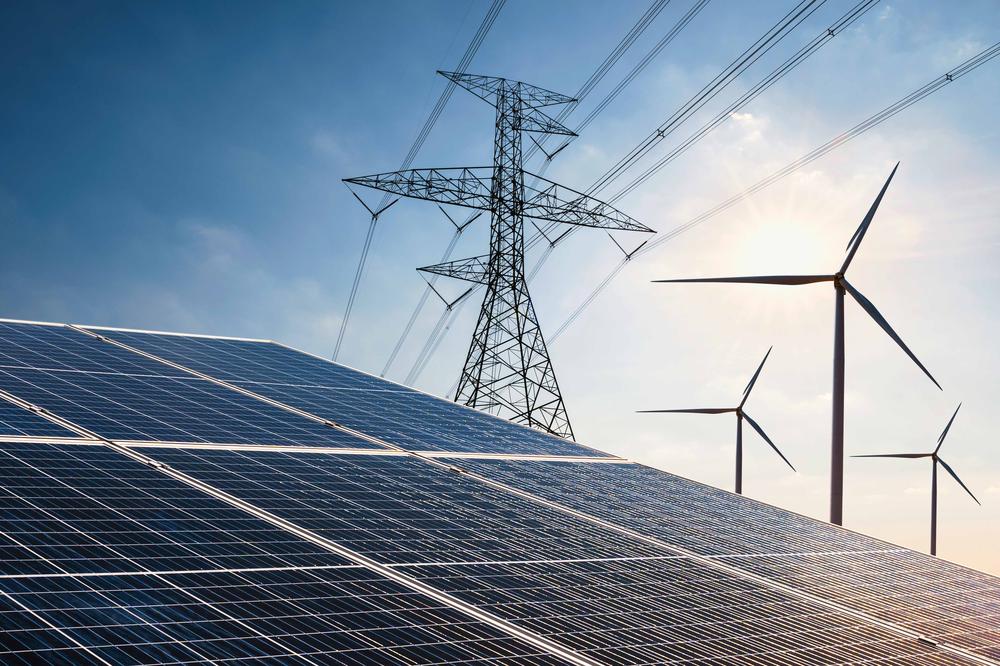
The B2B platform for the best purchasing descision. Identify and compare relevant B2B manufacturers, suppliers and retailers
Close
Filter
Result configuration
Continents
Select continent
Locations
Result types
Company type
Select company type
Industries
Select industry
Company status
Select company status preset
Number of employees
Min.
Max.
Founding year
RailRunner
Lexington, United States
B
1-10 Employees
1996
Key takeaway
RailRunner® specializes in low-cost intermodal transportation solutions, effectively combining rail and trucking to enhance shipping efficiency. Their unique Terminal Anywhere® system and Road-Ready Intermodal transport system offer innovative, sustainable options for moving cargo, making them a key player in the rail transportation sector.
Reference
Core business
RailRunner North America | Innovating Intermodal Technology
Rail Services Corp Ltd
United Kingdom
A
1-10 Employees
2006
Key takeaway
Rail Services Corporation is dedicated to enhancing rail transportation through innovative technology solutions and a skilled labor force. They combine rail and construction expertise to tackle complex railway projects and maintenance, aiming to provide reliable and efficient services to the rail industry.
Reference
Core business
Rail Services Corporation
European Carriage
Bristol, United Kingdom
A
1-10 Employees
-
Key takeaway
The company emphasizes its expertise in European carriage, including rail freight, and offers outstanding global coverage for various transportation needs. Their customer service team is available around the clock to assist with any queries.
Reference
Core business
Rail Freight
Looking for more accurate results?
Find the right companies for free by entering your custom query!
25M+ companies
250M+ products
Free to use
Radiant Road & Rail
Woodridge, United States
B
51-100 Employees
1938
Key takeaway
Radiant Road & Rail emphasizes its commitment to rail transportation as a key method for reliable long-distance shipping across North America. With access to a large fleet of rail-ready refrigerated units and a rich history in intermodal services, the company supports diverse supply chain solutions.
Reference
Service
Radiant Road & Rail | Intermodal Transportation Services
New Brunswick Southern Railway
Saint John, Canada
A
101-250 Employees
1995
Key takeaway
The company offers direct rail connections between Atlantic Canada and the northeastern United States, ensuring efficient cargo delivery across North America through partnerships with major railways.
Reference
Service
Rail Services | NBMR
DB Cargo Eurasia
Berlin, Germany
A
51-100 Employees
2008
Key takeaway
The company highlights its rail transportation services, emphasizing their commitment to environmental sustainability through certification that indicates emissions for goods transport.
Reference
Service
Rail Service

Tyburn Railroad Co
Morrisville, United States
B
1-10 Employees
1988
Key takeaway
Diamondback Signal offers signal installation and maintenance services for over 70 class II & III railroad customers across 20 states, enhancing customer satisfaction and supporting the growth of regional rail operations.
Reference
Core business
Regional Rail LLC

Pioneer Industrial Railway Co.
Peoria, United States
B
1-10 Employees
2013
Key takeaway
Patriot Rail is a prominent operator of short line and regional freight railroads, managing over 30 railroads and providing comprehensive rail services across more than 1,200 miles in the United States. Their focus on rail transport and freight services highlights their significant role in the North American railway industry.
Reference
Core business
Rail Transport, Railway Freight Company
Our premier railway freight company offers rail transport and rail services in North America.

MML Multimodal Logistics
Athens, Greece
B
11-50 Employees
2019
Key takeaway
The company offers international multimodal transport, including rail transportation, ensuring efficient and safe delivery from anywhere in the world. Their expertise in coordinating various transport modes enhances the effectiveness of logistics, particularly for long-distance and international shipments.
Reference
Product
Rail Transportation – Logistics
KRS-Logistics
Crisnée, Belgium
A
11-50 Employees
1983
Key takeaway
KRS Logistics is a freight-transport company with over 15 years of experience, specializing in efficient and reliable transport solutions, including rail transport. They offer a wide range of services tailored to meet diverse transportation needs, ensuring safety and affordability.
Reference
Service
Rail transport - KRS Logistics
Technologies which have been searched by others and may be interesting for you:
Rail transportation refers to the system of moving goods and passengers via trains on rail tracks. It is a vital mode of transport characterized by its efficiency and ability to handle large volumes of cargo over long distances. This mode utilizes various types of trains, including freight and passenger trains, and operates on a network of rail infrastructure, which includes tracks, stations, and signaling systems. The advantages of rail transportation include lower emissions compared to road transport, enhanced safety, and cost-effectiveness for bulk goods. Rail systems can connect urban centers with rural areas, facilitating trade and commuting, and they play a crucial role in the logistics and supply chain industries.
Rail transportation significantly impacts the environment in both positive and negative ways. On the positive side, it is one of the most energy-efficient modes of transport, producing lower greenhouse gas emissions per ton-mile compared to road and air transport. Trains can carry large volumes of goods over long distances, which helps to reduce the number of vehicles on the road, thereby decreasing traffic congestion and emissions. However, rail transportation also has its drawbacks. The construction and maintenance of rail infrastructure can disrupt local ecosystems and wildlife habitats. Additionally, while trains produce fewer emissions, they still rely on fossil fuels for operation, which contributes to air pollution. Overall, the balance of these effects highlights the need for sustainable practices in rail transportation to minimize its environmental footprint.
1. Cost Efficiency
Rail transportation is often more economical for moving large quantities of goods over long distances. The ability to carry bulk cargo reduces the cost per ton-mile, making it a preferred option for businesses looking to optimize their logistics expenses.
2. Environmental Sustainability
Trains are generally more energy-efficient compared to trucks, resulting in lower greenhouse gas emissions. This makes rail transportation a more sustainable choice, helping businesses meet environmental goals while minimizing their carbon footprint.
3. Safety and Reliability
Rail transport is known for its safety record. With lower accident rates compared to road transport, it provides businesses with a reliable method for shipping goods. Additionally, rail schedules can be more predictable, enhancing supply chain efficiency.
4. Capacity and Volume
Trains can carry a substantial amount of cargo at once, making them ideal for transporting heavy and bulk materials. This high capacity can significantly reduce the number of trips required compared to other modes of transport, streamlining logistics operations.
5. Reduced Traffic Congestion
Utilizing railways can alleviate congestion on roadways, leading to fewer delays in transportation. This not only benefits the environment but also improves overall efficiency in the supply chain by minimizing travel time for goods.
Advancements in technology are significantly enhancing the efficiency of rail transportation. Automated systems, such as positive train control (PTC), improve safety by preventing collisions and derailments, allowing for smoother operations. Additionally, the integration of Internet of Things (IoT) devices enables real-time monitoring of train conditions and track health, facilitating proactive maintenance and reducing downtime. Moreover, data analytics plays a crucial role in optimizing schedules and routes. By analyzing passenger flow and cargo demands, rail providers can adjust services to meet changing needs, maximizing capacity and minimizing delays. The implementation of energy-efficient trains and smart signaling systems further drives down operational costs and environmental impact, making rail transportation a more sustainable option.
Rail transportation systems encounter a variety of challenges that can impact their efficiency and effectiveness.
1. Infrastructure Maintenance
Keeping rail infrastructure in good condition requires significant investment and ongoing maintenance. Aging tracks, bridges, and signaling systems can lead to delays and safety concerns.
2. Competition from Other Modes of Transport
Rail systems often face competition from road and air transport, which can offer more flexible or faster options for passengers and freight. This competition can affect ridership and revenue.
3. Regulatory Compliance
Navigating complex regulatory environments is another hurdle. Rail operators must comply with safety regulations, environmental standards, and other requirements that can vary by region.
4. Technological Integration
As technology evolves, integrating new systems such as automated trains and advanced signaling can be challenging. These technologies require substantial investment and training.
5. Capacity Constraints
Increasing demand for rail services can lead to capacity issues. Limited track availability can result in congestion, affecting schedules and service reliability.
6. Funding and Investment
Securing adequate funding for expansion and upgrades is a persistent issue. Many rail systems struggle to find financial resources to modernize and expand their operations.
Some interesting numbers and facts about your company results for Rail Transportation
| Country with most fitting companies | United States |
| Amount of fitting manufacturers | 5275 |
| Amount of suitable service providers | 10000 |
| Average amount of employees | 11-50 |
| Oldest suiting company | 1938 |
| Youngest suiting company | 2019 |
20%
40%
60%
80%
Some interesting questions that has been asked about the results you have just received for Rail Transportation
What are related technologies to Rail Transportation?
Based on our calculations related technologies to Rail Transportation are Water/Ocean Cleaning Technologies, Waste Management, Renewable Energy, Sustainable Fashion, Smart Grid
Which industries are mostly working on Rail Transportation?
The most represented industries which are working in Rail Transportation are Logistics, Supply Chain and Transportation, Other, IT, Software and Services, Construction, Oil, Energy and Gas
How does ensun find these Rail Transportation Companies?
ensun uses an advanced search and ranking system capable of sifting through millions of companies and hundreds of millions of products and services to identify suitable matches. This is achieved by leveraging cutting-edge technologies, including Artificial Intelligence.